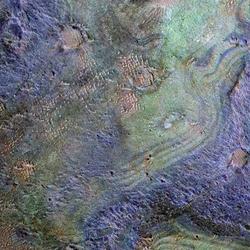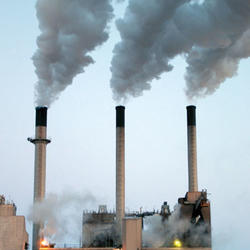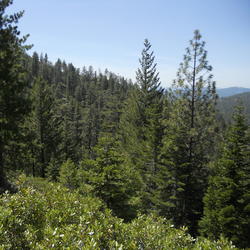UAS operations near Moab, Utah for carbon sequestration research on public lands
What’s the difference between geologic and biologic carbon sequestration?
Geologic carbon sequestration is the process of storing carbon dioxide (CO2) in underground geologic formations. The CO2 is usually pressurized until it becomes a liquid, and then it is injected into porous rock formations in geologic basins. This method of carbon storage is also sometimes a part of enhanced oil recovery, otherwise known as tertiary recovery, because it is typically used later in the life of a producing oil well. In enhanced oil recovery, the liquid CO2 is injected into the oil-bearing formation in order to reduce the viscosity of the oil and allow it to flow more easily to the oil well.
Biologic carbon sequestration refers to storage of atmospheric carbon in vegetation, soils, woody products, and aquatic environments. For example, by encouraging the growth of plants—particularly larger plants like trees—advocates of biologic sequestration hope to help remove CO2 from the atmosphere.
Related
What is carbon sequestration?
How does carbon get into the atmosphere?
How much carbon dioxide can the United States store via geologic sequestration?
Which area is the best for geologic carbon sequestration?
How much carbon dioxide does the United States and the World emit each year from energy sources?
Has the USGS made any Biologic Carbon Sequestration assessments?

UAS operations near Moab, Utah for carbon sequestration research on public lands
Biological carbon sequestration is the natural ability of life and ecosystems to store carbon. Forests, peat marshes, and coastal wetlands are particularly good as storing carbon. Carbon can be stored in plant tissue, such as long-lived tree bark or in extensive root systems. Microbes break down plant and animal tissue through decomposition.
Biological carbon sequestration is the natural ability of life and ecosystems to store carbon. Forests, peat marshes, and coastal wetlands are particularly good as storing carbon. Carbon can be stored in plant tissue, such as long-lived tree bark or in extensive root systems. Microbes break down plant and animal tissue through decomposition.
A short video on how carbon can get into the atmosphere.
A short video on how carbon can get into the atmosphere.
The use of carbon dioxide (CO2) injection for enhanced oil recovery (EOR) can prolong the productivity of many oil reservoirs and increase the U.S. hydrocarbon recoverable resource volume.
The use of carbon dioxide (CO2) injection for enhanced oil recovery (EOR) can prolong the productivity of many oil reservoirs and increase the U.S. hydrocarbon recoverable resource volume.
 PubTalk 1/2011 — Capture and Geologic Sequestration of Carbon Dioxide
PubTalk 1/2011 — Capture and Geologic Sequestration of Carbon Dioxide
Is Sequestration Necessary? Can We Do It at an Acceptable Total Cost?
By Yousif Kharaka, USGS National Research Program
Is Sequestration Necessary? Can We Do It at an Acceptable Total Cost?
By Yousif Kharaka, USGS National Research Program
A new method to assess the Nation's potential for storing carbon dioxide in rocks below the earth's surface could help lessen climate change impacts. The injection and storage of liquid carbon dioxide into subsurface rocks is known as geologic carbon sequestration.
Federal lands greenhouse gas emissions and sequestration in the United States: Estimates for 2005–22
Carbon dioxide mineralization feasibility in the United States
Federal lands greenhouse emissions and sequestration in the United States—Estimates for 2005–14
A long-term comparison of carbon sequestration rates in impounded and naturally tidal freshwater marshes along the lower Waccamaw River, South Carolina
Aggregation of carbon dioxide sequestration storage assessment units
A feasibility study of geological CO2 sequestration in the Ordos Basin, China
A method for assessing carbon stocks, carbon sequestration, and greenhouse-gas fluxes in ecosystems of the United States under present conditions and future scenarios
A spatial resolution threshold of land cover in estimating terrestrial carbon sequestration in four counties in Georgia and Alabama, USA
A Holocene record of climate-driven shifts in coastal carbon sequestration
A national look at carbon capture and storage-National carbon sequestration database and geographical information system (NatCarb)
A geochemical investigation into the effect of coal rank on the potential environmental effects of CO2 sequestration in deep coal beds
A guide to potential soil carbon sequestration: Land-use management for mitigation of greenhouse gas emissions
Related
What is carbon sequestration?
How does carbon get into the atmosphere?
How much carbon dioxide can the United States store via geologic sequestration?
Which area is the best for geologic carbon sequestration?
How much carbon dioxide does the United States and the World emit each year from energy sources?
Has the USGS made any Biologic Carbon Sequestration assessments?

UAS operations near Moab, Utah for carbon sequestration research on public lands
UAS operations near Moab, Utah for carbon sequestration research on public lands
Biological carbon sequestration is the natural ability of life and ecosystems to store carbon. Forests, peat marshes, and coastal wetlands are particularly good as storing carbon. Carbon can be stored in plant tissue, such as long-lived tree bark or in extensive root systems. Microbes break down plant and animal tissue through decomposition.
Biological carbon sequestration is the natural ability of life and ecosystems to store carbon. Forests, peat marshes, and coastal wetlands are particularly good as storing carbon. Carbon can be stored in plant tissue, such as long-lived tree bark or in extensive root systems. Microbes break down plant and animal tissue through decomposition.
A short video on how carbon can get into the atmosphere.
A short video on how carbon can get into the atmosphere.
The use of carbon dioxide (CO2) injection for enhanced oil recovery (EOR) can prolong the productivity of many oil reservoirs and increase the U.S. hydrocarbon recoverable resource volume.
The use of carbon dioxide (CO2) injection for enhanced oil recovery (EOR) can prolong the productivity of many oil reservoirs and increase the U.S. hydrocarbon recoverable resource volume.
 PubTalk 1/2011 — Capture and Geologic Sequestration of Carbon Dioxide
PubTalk 1/2011 — Capture and Geologic Sequestration of Carbon Dioxide
Is Sequestration Necessary? Can We Do It at an Acceptable Total Cost?
By Yousif Kharaka, USGS National Research Program
Is Sequestration Necessary? Can We Do It at an Acceptable Total Cost?
By Yousif Kharaka, USGS National Research Program
A new method to assess the Nation's potential for storing carbon dioxide in rocks below the earth's surface could help lessen climate change impacts. The injection and storage of liquid carbon dioxide into subsurface rocks is known as geologic carbon sequestration.











